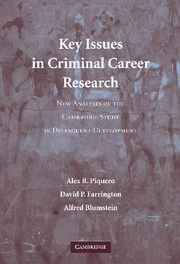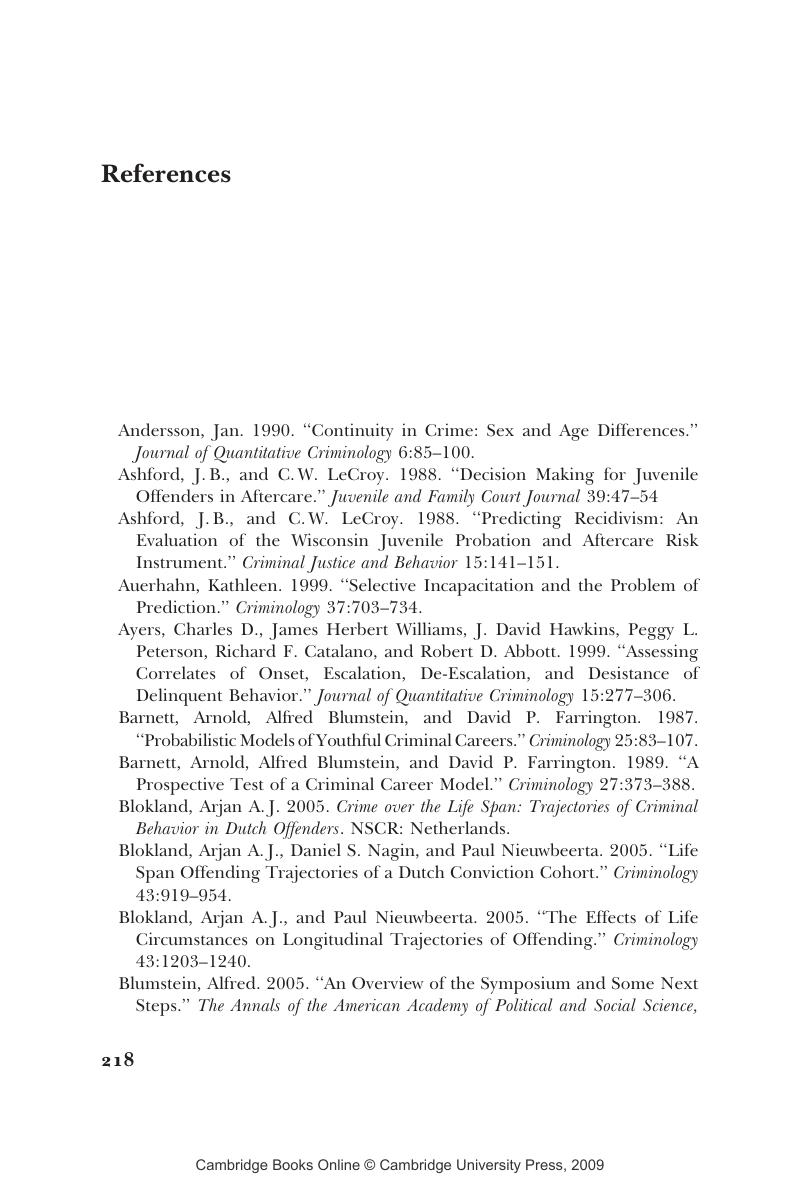 Key Issues in Criminal Career Research
Key Issues in Criminal Career Research Book contents
- Frontmatter
- Contents
- Foreword by Charles F. Wellford
- Acknowledgments
- 1 Introduction
- 2 Overview of Criminal Careers
- 3 Overview of CSDD Data
- 4 How Do Prevalence and Individual Offending Frequency Vary with Age?
- 5 How Does Onset Age Relate to Individual Offending Frequency?
- 6 How Does Specialization/Versatility Vary with Age?
- 7 Comparing the Validity of Prospective, Retrospective, and Official Onset for Different Offending Categories
- 8 What Is the Role of Co-offenders, and How Does It Vary with Age?
- 9 Are Chronic Offenders Serious Offenders, and Does This Relationship Vary with Age?
- 10 Trajectories of Offending
- 11 Developing Estimates of Duration and Residual Career Length
- 12 A Summary and an Agenda for Future Research
- References
- Index
- Titles in the series
- References
References
Published online by Cambridge University Press: 30 July 2009
- Frontmatter
- Contents
- Foreword by Charles F. Wellford
- Acknowledgments
- 1 Introduction
- 2 Overview of Criminal Careers
- 3 Overview of CSDD Data
- 4 How Do Prevalence and Individual Offending Frequency Vary with Age?
- 5 How Does Onset Age Relate to Individual Offending Frequency?
- 6 How Does Specialization/Versatility Vary with Age?
- 7 Comparing the Validity of Prospective, Retrospective, and Official Onset for Different Offending Categories
- 8 What Is the Role of Co-offenders, and How Does It Vary with Age?
- 9 Are Chronic Offenders Serious Offenders, and Does This Relationship Vary with Age?
- 10 Trajectories of Offending
- 11 Developing Estimates of Duration and Residual Career Length
- 12 A Summary and an Agenda for Future Research
- References
- Index
- Titles in the series
- References
Summary

- Type
- Chapter
- Information
- Key Issues in Criminal Career ResearchNew Analyses of the Cambridge Study in Delinquent Development, pp. 218 - 236Publisher: Cambridge University PressPrint publication year: 2007
